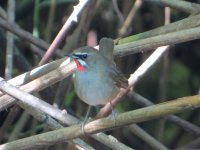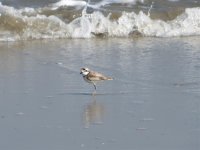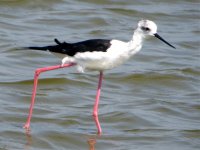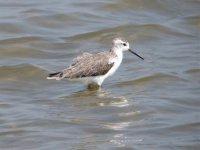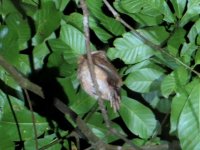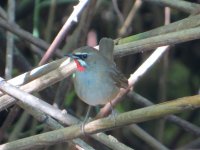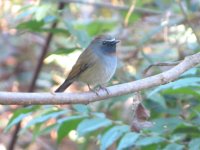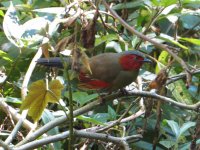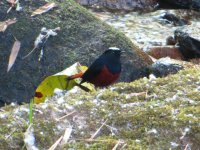simmojunior
Well-known member
It was a warm evening in May when Drew Lyness, Sophie Barrell and I were walking round the canal at Spurn discussing holidays abroad, specifically a joint desire to go to Thailand. I soon messaged Henry Cook, whom I travelled with in northern Peru last year. Before we knew it, we had hatched a plan for the 4 of us to spend Christmas in Thailand.
We eventually settled on spending just under 10 days doing a circuit from Bangkok and just over 10 days doing a circuit from Chiang Mai. I had been to Malaysia and Borneo before but it was the first trip to South East Asia for the others so we designed the route to maximise species and specialities rather than specific targets.
We did the trip completely independently using hire cars (Toyota Yaris saloon from Europcar for Bangkok circuit and Nissan Fortuner from Avis for the Chiang Mai circuit). The high clearance was definitely useful in the north but the Yaris was absolutely fine for the centre of the country as all roads were in good condition. We flew with Vietnam airways from Heathrow to Bangkok via Ho Chi Minh city (£500 return) and the superb Bangkok airways between Bangkok and Chiang Mai (£65 return). I booked most the accommodation in advance through Agoda, Booking.com, contacting the hotels directly or (for camping) on the Thai National Parks website. The total trip was excellent value, coming to less than £1,200 each including flights and food - £3,500 cheaper than the equivalent offered by tour companies and that does not even include flights!
The trip was hugely successful as I saw 433 species out of a total group list of 446, of which 185 were lifers for me. The north of the country was particularly good as we found several rare and spectacular species. The only disappointing part was Kaeng Krachan, where we were hindered by pointless park closures and an unfortunate incident with a dog, although a special encounter with a rare owl made the visit worthwhile (see below). In addition to the birds, we enjoyed some great mammal encounters, wonderful food and stunning landscapes.
Note: This report will not give precise costs or grid references but do get in touch if you want this information. You can tweet me @OSimmsBirding or drop me a PM.
We eventually settled on spending just under 10 days doing a circuit from Bangkok and just over 10 days doing a circuit from Chiang Mai. I had been to Malaysia and Borneo before but it was the first trip to South East Asia for the others so we designed the route to maximise species and specialities rather than specific targets.
We did the trip completely independently using hire cars (Toyota Yaris saloon from Europcar for Bangkok circuit and Nissan Fortuner from Avis for the Chiang Mai circuit). The high clearance was definitely useful in the north but the Yaris was absolutely fine for the centre of the country as all roads were in good condition. We flew with Vietnam airways from Heathrow to Bangkok via Ho Chi Minh city (£500 return) and the superb Bangkok airways between Bangkok and Chiang Mai (£65 return). I booked most the accommodation in advance through Agoda, Booking.com, contacting the hotels directly or (for camping) on the Thai National Parks website. The total trip was excellent value, coming to less than £1,200 each including flights and food - £3,500 cheaper than the equivalent offered by tour companies and that does not even include flights!
The trip was hugely successful as I saw 433 species out of a total group list of 446, of which 185 were lifers for me. The north of the country was particularly good as we found several rare and spectacular species. The only disappointing part was Kaeng Krachan, where we were hindered by pointless park closures and an unfortunate incident with a dog, although a special encounter with a rare owl made the visit worthwhile (see below). In addition to the birds, we enjoyed some great mammal encounters, wonderful food and stunning landscapes.
Note: This report will not give precise costs or grid references but do get in touch if you want this information. You can tweet me @OSimmsBirding or drop me a PM.




